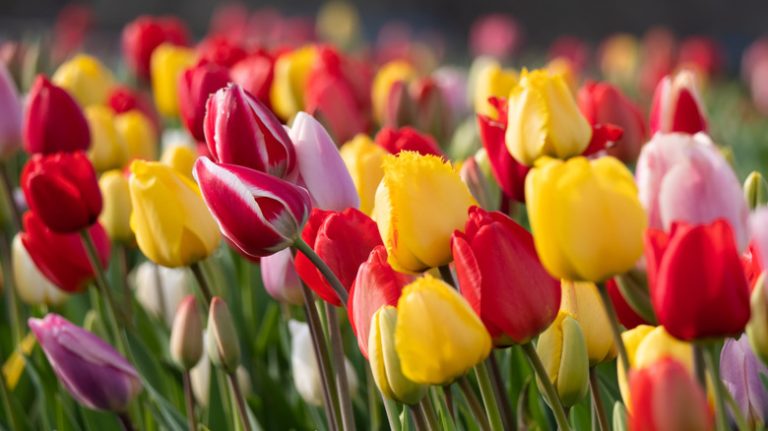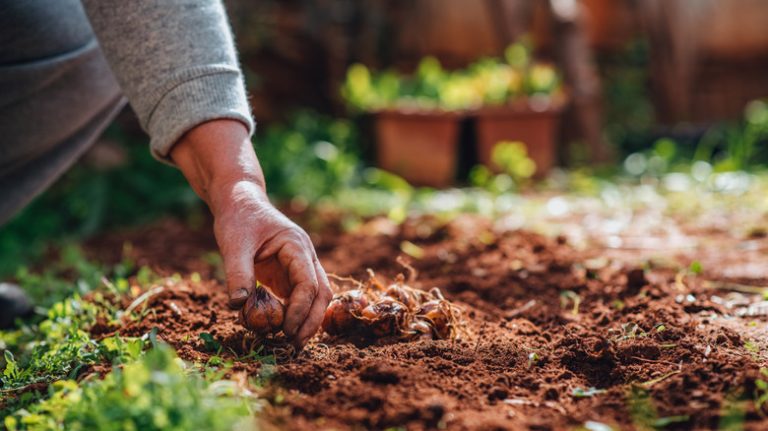If you are looking for an elegant and low-maintenance groundcover, Asiatic Jasmine is an excellent choice. With its thick and dense foliage, this plant can quickly cover large areas and create a lush and green landscape. It is a vining plant that can be planted directly in the ground or in pots, making it suitable for various types of gardens.
Asiatic Jasmine thrives in well-drained soil and likes regular watering to keep it healthy and vibrant. Though it can withstand some periods of drought, it prefers to be watered regularly, especially during the hot summer months. It also thrives in sunlight, although it can tolerate shaded sites as well.
This plant is known for its adaptability and easy propagation. You can quickly create more plants by taking stem cuttings and propagating them. Calloway’s Nursery and other gardening publications provide helpful guides on how to successfully propagate Asiatic Jasmine. Additionally, it can also be grown from seeds or transplanted from pots or other containers.
One of the most attractive characteristics of Asiatic Jasmine is its dense foliage, which helps to suppress weeds and prevent soil erosion. Its leaves are shiny and green, creating a very aesthetically pleasing appearance. In addition, this groundcover is highly heat tolerant and can withstand high temperatures without wilting or turning brown.
Asiatic Jasmine is a popular choice for groundcover in many landscapes due to its versatility and low-maintenance requirements. It can be used as a filler between pavers or as an alternative to traditional lawn grass. Its dense growth also provides a natural habitat for many beneficial insects and can help attract birds and butterflies to your garden.
Whether you are a seasoned gardener or a beginner, Asiatic Jasmine is a plant that can thrive in a variety of conditions. With proper care and maintenance, this groundcover can create a beautiful and lush landscape that will last for many years. So, if you are looking for a versatile and attractive groundcover, consider planting Asiatic Jasmine in your garden.
How to Grow and Care for Asiatic Jasmine
Asiatic Jasmine, botanically known as Trachelospermum asiaticum, is a popular ground cover plant that is commonly used in gardens and landscapes. It is easy to grow and requires minimal care, making it a favorite for many gardeners.
To start growing Asiatic Jasmine, first make sure you choose a well-drained area in your garden. The plant prefers soil that is rich and moist but not waterlogged. Prepare the soil by adding organic matter, such as compost or peat moss, to improve its fertility and drainage.
Spruce up the area by removing any weeds or grass and create a thick layer of mulch to help retain moisture and suppress weed growth. This will also help in conserving water, making your garden more drought-resistant.
Asiatic Jasmine can be planted in full sun or partial shade, but it grows best in filtered sunlight or partial shade. It can tolerate a wide range of soil types and can even thrive in poor soils. However, it is important to note that Asiatic Jasmine does not do well in heavy clay or waterlogged soils.
To create a lush carpet of Asiatic Jasmine, space the plants about a foot or half a foot apart. This will allow them to fill in the ground and create a thick coverage. You can also plant them in flowerbeds or landscape plantings to add beauty and attract pollinators.
One important characteristic of Asiatic Jasmine is its ability to tolerate both heat and frost. This makes it an ideal plant for both warmer and cooler climates. During the winter months, you can provide added protection by adding a layer of mulch around the base of the plants to help insulate them from the cold.
Another important aspect of caring for Asiatic Jasmine is watering. While it is a drought-tolerant plant, it still requires regular watering to thrive. Water your plants deeply but infrequently, allowing the soil to dry slightly between waterings. Avoid overwatering, as this can lead to root rot.
Fertilize your Asiatic Jasmine once a year in early spring with a slow-release, balanced fertilizer. This will provide the necessary nutrients for healthy growth and beautiful foliage. Follow the instructions on the fertilizer package for application rates and methods.
Asiatic Jasmine does not require regular pruning, but you can trim it back if it becomes too invasive or starts to encroach on other plants or walkways. Simply use a sharp knife or pruning shears to remove any unwanted growth. You can also trim back the plants to maintain a desired shape or size.
When it comes to repotting Asiatic Jasmine, it is usually not necessary unless the plants become root-bound or outgrow their containers. If repotting is required, choose a slightly larger pot and use a well-draining potting soil. Water the plants thoroughly after repotting to help them settle into their new container.
In conclusion, growing and caring for Asiatic Jasmine is relatively easy. With proper water, light, and soil conditions, this versatile plant will thrive and create a beautiful ground cover in your garden. Its attractive foliage and resilience to various growing conditions make it a popular choice for many gardeners. So go ahead and add some Asiatic Jasmine to your landscape and enjoy its beauty for years to come!
Asiatic Jasmine Care
Asiatic Jasmine, also known as Trachelospermum asiaticum, is a versatile plant that likes to spread and cascade across the ground. Though it doesn’t require much maintenance, there are a few important care tips to keep in mind to ensure its health and success.
When it comes to planting Asiatic Jasmine, make sure to choose a well-drained, rich soil. This plant can tolerate a wide range of soil types, but it thrives best in soil that is even and light. If you’re planting it in containers, use premium potting soil to provide the necessary nutrients.
Asiatic Jasmine prefers to be watered regularly but doesn’t like to sit in wet soil. Water it deeply once a week, allowing the soil to dry out between waterings. In the hotter months, it may need to be watered more often to combat the heat and maintain moisture.
In terms of sunlight, Asiatic Jasmine prefers full to partial sun. It can tolerate some shade, especially in hotter climates. Therefore, it can be planted underneath larger shrubs or in shaded areas of the garden. However, it still needs some direct sunlight to thrive.
Fertilizer is not a common necessity for Asiatic Jasmine. However, if you feel the plants need a little extra boost, you can apply a balanced fertilizer once or twice a year. Make sure to follow the instructions on the fertilizer for the correct dosage and application method.
Asiatic Jasmine is a fast-growing groundcover, so regular pruning is necessary to keep it tidy and prevent it from spreading too far. Use hand pruners or shears to trim back any overgrowth or straggly branches. This can be done throughout the year as needed.
During the winter months, Asiatic Jasmine can withstand mild frost but may suffer damage in colder regions. To protect it from harsh winter weather, consider covering it with a layer of mulch or burlap. This will help insulate the plants and prevent frost damage.
Asiatic Jasmine is generally resistant to pests and diseases. However, some common pests, such as aphids and scale insects, may occasionally appear. Monitor the plants regularly and apply appropriate pest control measures if necessary.
Overall, Asiatic Jasmine is a low-maintenance groundcover that can add beauty and elegance to any garden or landscape. With proper care and upkeep, it will fill your space with lush greenery and fragrant star-shaped flowers.
For more information on Asiatic Jasmine care and specific instructions for your zone, consult local gardening resources or the University of Florida IFAS Extension.
Light
Asiatic Jasmine, also known by its scientific name Trachelospermum asiaticum, is a versatile groundcover plant that can thrive in various light conditions. While it generally prefers full sunlight, it can also tolerate partial shade. However, it is worth noting that the plant will produce more flowers and overall growth in a sunnier location.
When planting Asiatic Jasmine, it is important to choose the best areas that receive adequate light. This will enable the plant to grow and fill in the ground efficiently. In shaded or darker areas, the growth may be slower, and the plant may require more pruning and upkeep to maintain a lush appearance.
In terms of overwintering, Asiatic Jasmine is usually hardy in zones 7 to 9, and it can tolerate light frost. To protect the plant during colder temperatures, it is recommended to use a layer of mulch around the base to insulate the roots. This helps prevent winter damage and aids in the plant’s survival.
Although Asiatic Jasmine can tolerate a wide range of light conditions, it is essential to avoid excessive direct sunlight, particularly during the hotter months. Intense sunlight can cause the leaves to scorch, resulting in brown or yellowish patches. Providing some shade during the peak of summer can help prevent this issue.
Overall, a well-draining soil and moderate watering schedule are crucial for the optimal growth of Asiatic Jasmine. The amount of water required will depend on the temperature, humidity, and nature of the soil. Generally, it is best to keep the soil evenly moist, but not overly saturated, to avoid root rot and other water-related diseases.
During the growing season, it is recommended to fertilize Asiatic Jasmine with a balanced, slow-release fertilizer. This will help provide the necessary nutrients for healthy growth and blooming. However, it is important to avoid over-fertilizing, as this can lead to excessive foliage growth and may diminish flower production.
When it comes to propagation, Asiatic Jasmine can be easily grown from stem cuttings. Using a sharp knife, take 2 to 3-inch cuttings from a healthy plant and remove the lower leaves. Dip the cut end in rooting hormone, then place the cutting in a pot or flowerbed with well-draining soil. Keep the soil slightly damp until new growth appears.
In terms of spacing, Asiatic Jasmine plants should be planted around 2 to 3 feet apart to allow for filling in the ground effectively. This will create a uniform and dense groundcover. However, the spacing can be adjusted based on personal preference and the speed at which the plants are expected to grow.
Asiatic Jasmine is a low-maintenance plant that can be a beautiful addition to any landscape. Its ability to tolerate various light conditions and drought make it a premium choice for homeowners and gardeners alike. With proper care and control, it can create a stunning carpet of green, adding texture and interest to the yard or garden.
Confederate Jasmine, a trademarked name for Trachelospermum jasminoides, is another popular variety of jasmine. While it shares similar characteristics to Asiatic Jasmine, it is usually grown in more shaded areas and may require more water than its Asiatic counterpart.
In conclusion, light is an essential factor in the successful growth of Asiatic Jasmine. Finding the right balance of sunlight and shade will ensure that the plant thrives and remains healthy. Whether used as a groundcover or grown in pots, Asiatic Jasmine can be a beautiful and versatile addition to any garden or landscape.



